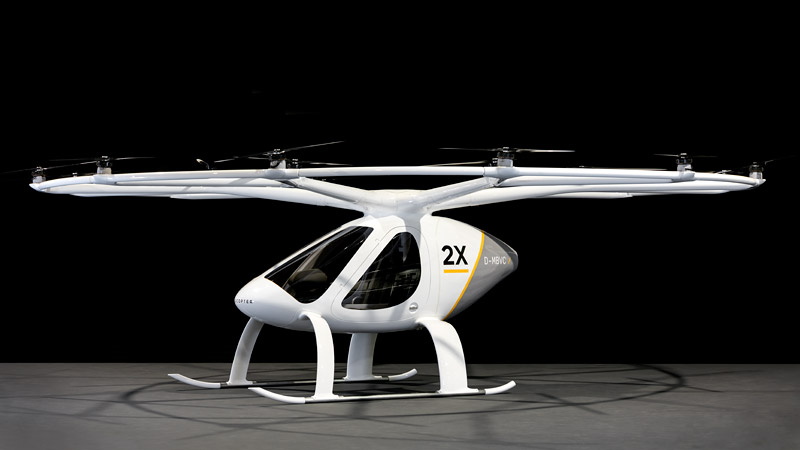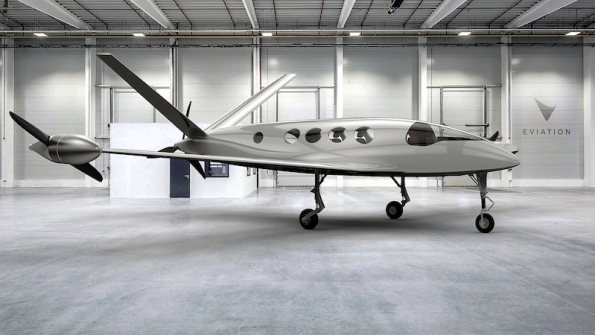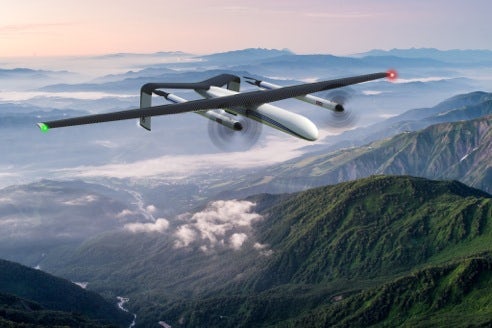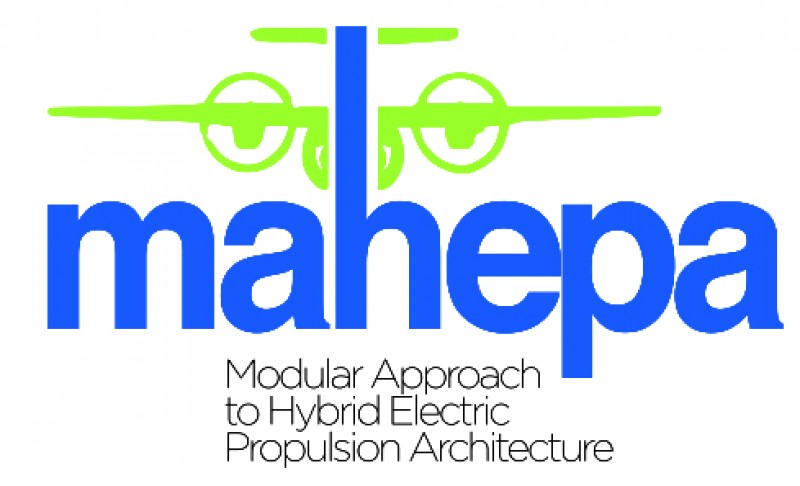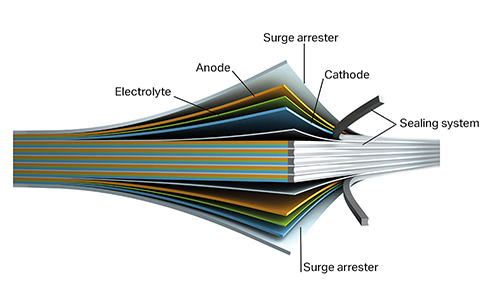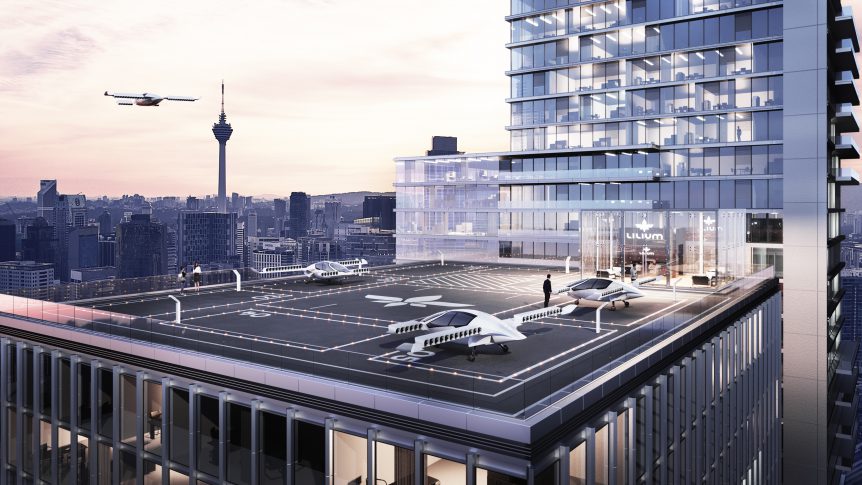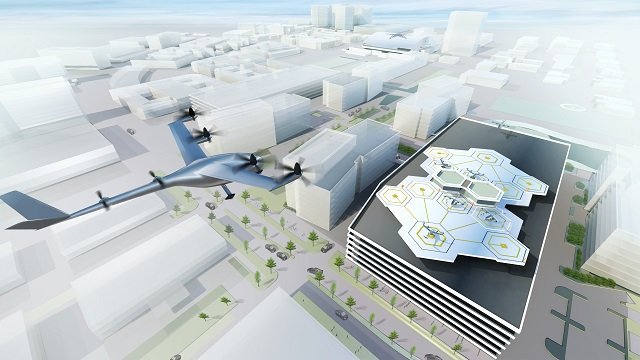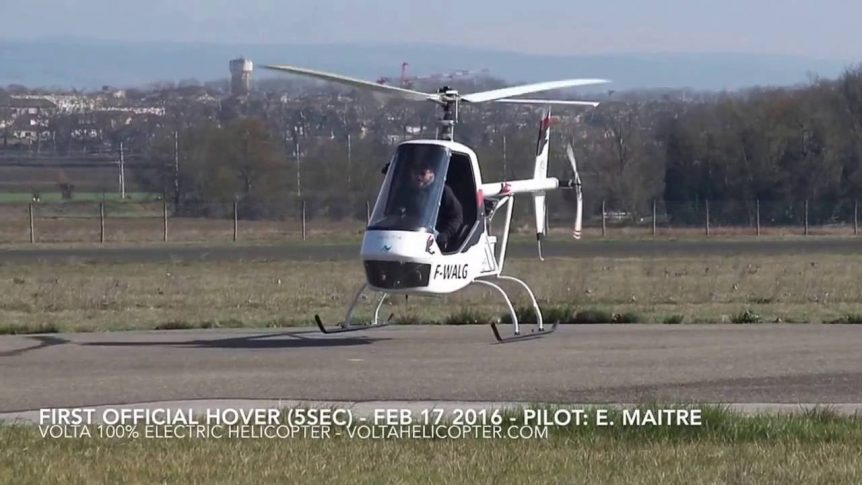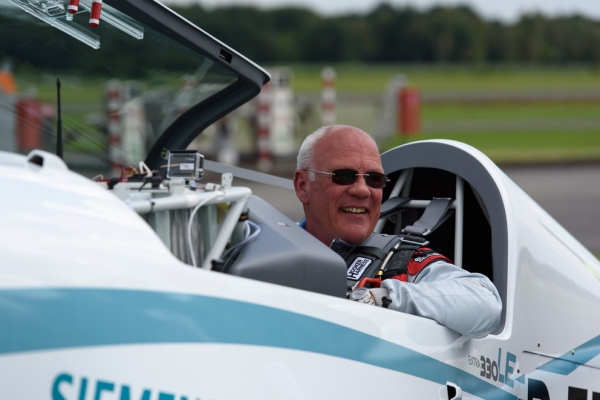Dubai, already having penned a similar agreement with China’s eHang, will start test runs of autonomous air taxis in 2017 with the Volocopter. Volocopter’s Eventful Year Volocopter has had an eventful year, introducing its latest model, the 2X, at this year’s Friedrichshafen Aero E-Flight Expo and opening its new corporate headquarters. Now, it looks forward to demonstrating its craft in regular service. e-Volo writes, “Our vision becomes reality: Dubai’s government “Roads and Transport Authority” (RTA) has signed an agreement with us regarding the regular test mode of Autonomous Air Taxis (AAT) in the emirate. The test will start in the fourth quarter of 2017, and the project has been scheduled to run for five years.” The Volocopter 2X, according to its makers, is simply foolproof, having 100 microprocessors and a large number of sensors helping maintain vehicle stability, even in turbulence. Volocopter has demonstrated hands-free flight on several occasions. Stability is part of its safety factor, and 18 rotors with …
EViation Electric Aircraft: Demanding Disruption
Aviation Week reports from the Paris Air Show on a “disruptive” entry in electric aviation. Eviation, founded by Omer Bar Yohai, is primed to deliver a change in transportation as we know it. Yohai says, “The dominant solutions available today are deeply flawed and demand disruption.” The company’s promotional video only hints at the company’s intentions. Their vision statement on their web site, though, indicates a skyward aspiration: “Making electric aviation the fast, competitive and clean answer to on-demand mobility of people and goods.” Aviation Week’s Noam Eshel quotes Bar Yohai as saying, “We design, test and build the tools that will enable future of regional transit by air, changing consumers’ perception of both distance and time. Five years from now, EViation is set to enable cheap, high-speed, sustainable and convenient regional commuting using light aircraft, tightly integrated with on-demand ground transport solutions. Currently, a sub-scale prototype is undergoing testing and risk-reduction evaluations. The company expects its first firm orders …
Batteries Following Roads Less Taken
When you come to a fork in the road, take it. Yogi Berra Technology and new products continue to enhance the development and realization of electric and solar aircraft. Two approaches to batteries, both of which explore roads less taken, have some promise for aircraft use. Shine Some Light on It What if your battery could be recharged just by exposing it to light? A team of South Korean researchers, affiliated with UNIST (Ulsan National Institute of Science and Technology) has developed a single-unit, photo-rechargeable portable power source based on high-efficiency silicon solar cells and lithium-ion batteries (LIBs). Rechargeable under solar or artificial light, the unit could power other electronic devices, “even in the absence of light.” Professor Sang-Young Lee and Professor Kwanyoung Seo of Energy and Chemical Engineering at UNIST have presented a new class of monolithically integrated, portable PV–battery systems (SiPV–LIBs) based on miniaturized crystalline Si photovoltaics (c-Si PVs) and printed solid-state lithium-ion batteries (LIBs). Using a thin-film printing …
Long Hours of Droning On
Several different organizations are trying different ways to keep unmanned aerial vehicles, UAVs, up longer. We’ll look at three recent efforts in long-endurance missions, each with a unique technological approach. Wirth Research – Hydrogen Fuel Cell Wirth Research is now constructing a new tilt rotor, Vertical Take Off and Landing (VTOL), hydrogen fuel cell powered, advanced terrain-mapping drone. Carrying a payload of sensors and onboard data processing capabilities, the vehicle will be powered by a complete H2 storage, control and power system provided by HES of Singapore, a specialist in ultra-light hydrogen fuel cells. The Wirth machine’s missions range from precision agriculture, to pipeline and cable inspection for utilities, surveillance and other security-related tasks, through to detection and monitoring support for ordnance clearance operations. Combining the ability to carry a large payload and provide up to six-hour endurance in the VTOL configuration meant shifting from battery to hydrogen power. HES Founder and CEO, Taras Wankewycz, said, “We are shifting gears …
MAHEPA, Modularizing the Approach to Clean Flight
Pipistrel, itself flying pure electric and hybrid aircraft, has announced its participation in MAHEPA, a Modular Approach to Hybrid-Electric Propulsion Architecture. MAHEPA aims to,” reduce the gap between research and the production of low-emission propulsion technologies that would enable the achievement of environmental objectives in the field of aviation by 2050.” Mahepa’s first meeting, held May 15 and 16 at Pipistrel’s headquarters at Ajdovscina (Slovenia), helped define the direction for a major academic/industry project. Led by the aircraft manufacturer, in cooperation with Compact Dynamics, DLR (Germany’s equivalent of NASA), the University of Ulm, H2Fly, Politecnico di Milano, TU Delft and University of Maribor, project goals are impressive. – “To boost research in the field of low emission propulsion technology to open up possibilities for series production of greener airplanes in order to support European environmental goals in aviation.” This will result in “novel, modular and scalable hybrid-electric powertrains capable of running on alternative fuels or on hydrogen with zero emissions.” …
EMBATT – an Embedded Battery that combines Structure and Energy
Imagine a battery that reduces the overall number of structural parts in an electrical vehicle and the volume taken up by the battery. That’s the concept behind EMBATT (chassis embedded battery), which functions as structural energy storage. It can cut the volume occupied by a battery in half, with serendipitous outcomes for lightness and structural efficiency. This is similar to NASA-backed research on cubesat walls that also function as energy storage structures. IAV is a German firm that provides consultation and partnerships with leading automotive companies. It specializes in synergistic concepts and system-level thinking. The company, working with Fraunhofer Institute for Ceramic Technologies and Systems IKTS in Dresden, and Thyssen Krupp System Engineering ,“Want[s] to use our experience from automotive development for renewable energies and decentralized energy supply.” It sees strong links between these endeavors, and works to combine technologies that will enable greater efficiency. Think of a Tesla battery pack, composed of individual cells connected in series and parallel …
Lilium Flies a Quick Demonstration
Lilium, a 36-motor electric VTOL aircraft, made initial test flights near Munich, Germany.
Uber Elevate Summit Announces Sky Taxis by 2020
A scad of news about electric aircraft hit the internet and newsstands last week. Even USA Today reported on the Uber Elevate Summit in Dallas, Texas – held with many of the participants in the 2017 Sustainable Aviation Symposium a few days before. Big news came from Uber’s announcement that it intends to offer electric VTOL (vertical takeoff and landing) air taxi service in Dallas and Dubai by 2020. Bigger news for SAS participants is that it is partnering with Pipistrel and Aurora Flight Sciences, both presenting at the San Francisco event. Jeff Holden, Uber’s chief product officer, said Bell Helicopters, Brazil’s Embraer, and Mooney Aircraft would also provide “concepts and technologies” for the near-term launch. According to Aviation Daily, “Aurora has already flown a quarter-scale model of its concept, using elements of the electric propulsion system flown in the subscale demonstrator for DARPA’s XV-24A LightningStrike high-speed VTOL aircraft.” Aurora’s concept for Uber is a two-seat eight-rotor (for vertical lift) …
French Electric Helicopter Has Very Public Outing
The Volta is a French electric helicopter, and has been setting endurance records with almost every flight, it seems. From its first hovering on February 17, 2016, and a first “official” three-minute flight on October 19, Volta has risen to new heights and set new “bests” for itself. Volta is based on Microcopter MC1, a one-of-a-kind model designed in 2004. Propelled by a Subaru engine “that was never successfully regulated,” the MC1 was an ultralight helicopter of conventional design that caused Philippe Antoine to see its possibilities as an electric machine. Incidentally, you may still be able to get plans for the MC1 from Redback Aviation. Antoine replaced the fossil-fuel power train with an electric one, including an Enstroj motor. Interestingly, Aquinea, a swimming pool heating vendor, sponsors the effort and ENAC, the Ecole Nationale de l’Aviation Civile (The National School of Civil Aviation) provides technical support. He has transformed this unassuming-looking copter to cleaner operation, noting the following advantages for …
Siemens-Powered Extra 330LE Makes a Great Tow Plane
Already proving its ability to climb at a great rate on its own, the Siemens-powered Extra 330LE towed an LS-8 sailplane to 600 meters (1.968 feet) in a mere 76 seconds. This alone could be a gift to soaring. Sitting at the controls of a sailplane being towed aloft behind a conventionally-powered tow plane proves taxing, for the many minutes it takes to gain a release height of 2,000 or 3,000 feet can seem somewhat endless. It’s also expensive for the gliding club or commercial operation. The soaring club in which your editor was a member calculated the average tow for a Piper Pawnee or Cessna AgWagon consumed around 2.7 gallons to 3.0 gallons of $5.00 a gallon avgas. Twenty or thirty tows a day make for significant operational costs. It’s also the most dangerous part of the flight. A wrong move by a student (or experienced pilot) on tow can put two airplanes and their occupants into the dirt. …

